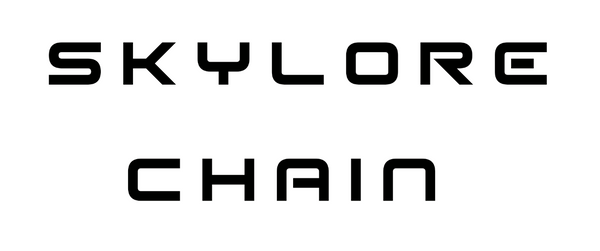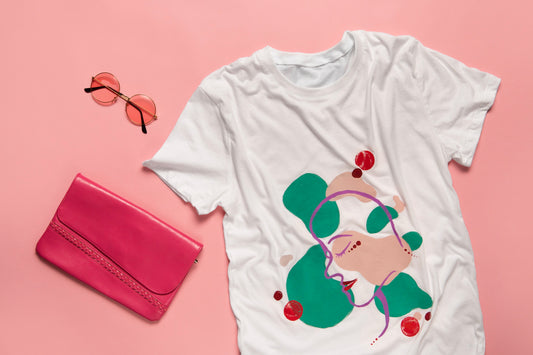
How to Start a Jewelry Business
Historical Background of Jewelry
The art of jewelry making has a rich and varied history that dates back thousands of years, intertwined with human civilization. Its origins can be traced to prehistoric times, around 40,000 BCE, when early humans crafted simple adornments from natural materials such as shells, bones, and stones. These early pieces likely served decorative and symbolic purposes, possibly as amulets or markers of social status.
As civilizations developed, so too did the techniques and materials used in jewelry making. Ancient Egypt stands out as a significant contributor to the craft, where jewelry symbolized wealth and held religious significance. Pharaohs were often buried with elaborate gold and gemstone adornments, believed to accompany them in the afterlife. The ancient Greeks and Romans further advanced jewelry design, introducing intricate motifs and utilizing precious metals and gems extensively.
The Middle Ages saw a shift in jewelry's role, becoming a marker of nobility and power. Sumptuary laws restricted the wearing of certain types of jewelry to the upper classes, reinforcing its association with wealth. The Gothic and Renaissance periods brought about styles characterized by elaborate designs that incorporated gemstones and intricate metalwork. During the Renaissance, trade routes expanded, introducing new materials and influences from distant lands.
The Industrial Revolution marked a pivotal moment in jewelry manufacturing. The introduction of mass production techniques made jewelry more accessible to the middle class, leading to an increase in silver's popularity as an alternative to gold. The 20th century witnessed the emergence of various artistic movements such as Art Nouveau and Art Deco, which revolutionized design aesthetics by favoring natural forms and geometric shapes respectively. Today, the jewelry industry is a global enterprise that blends traditional craftsmanship with modern technology like computer-aided design (CAD) and 3D printing.
Why Start a Jewelry Business?
Starting a jewelry business offers numerous benefits, both personal and professional:
- Express Your Creativity: Designing and crafting jewelry allows you to explore your artistic side and bring your unique ideas to life.
- Flexibility: Enjoy the freedom to work from home or set your own hours, making it an ideal choice for those seeking a better work-life balance.
- Low Startup Costs: Compared to many other businesses, starting a jewelry venture can be relatively inexpensive, especially if you begin by working from home.
- Potential for Growth: As your business gains traction, there are numerous opportunities for expansion, such as offering custom designs, wholesaling to boutiques, or even opening your own retail store.
- Market Demand: The global jewelry market is expected to increase by $46.3 billion between 2024 and 2028, indicating a growing demand for unique jewelry pieces.
How to Start a Jewelry Business in 9 Steps
- Find Your Niche: Identify what makes your jewelry unique. This could be a specific style, material, or target audience. Research existing brands and see where you can fill a gap in the market.
- Research Market Trends: Conduct thorough research to understand your target audience, competitors, and current trends in the jewelry industry. This knowledge will help you make informed decisions about pricing, marketing, and product development.
- Define Your Brand: Establish a strong brand identity that reflects your style and resonates with your target audience. Create a memorable name, logo, and overall aesthetic that sets you apart from competitors.
- Produce or Source Your Jewelry Products: Decide whether you will create your jewelry from scratch or source materials and products from suppliers. If sourcing, ensure you choose high-quality materials that align with your brand values.
- Set Up a Jewelry Business Studio or Workspace: Create an organized and comfortable workspace that fosters creativity and productivity. Invest in the necessary tools and equipment to produce your jewelry efficiently.
- Take Professional Photos of Your Products: High-quality images are crucial for attracting customers online. Invest in a good camera or hire a professional photographer to showcase your jewelry beautifully.
- Build Your E-commerce Store: Choose platforms that best suit your business model, whether it's an independent website or established marketplaces like Etsy or Amazon. Ensure your online store is user-friendly and optimized for conversions.
- Market Your E-commerce Jewelry Brand: Use digital marketing strategies to promote your brand. Leverage social media, email marketing, and SEO to reach your target audience effectively.
- Scale Your Business: As your business grows, explore opportunities for expansion. Consider launching new product lines, collaborating with other brands, or wholesaling your jewelry to boutiques.
Skylore Chain: Your Partner in Jewelry Business
As you embark on your jewelry business journey, consider partnering with Skylore Chain. Our trading and supply chain services provide one-stop solutions for product design, production, and logistics. By handling these aspects, you can focus on what you do best: creating stunning jewelry. Our services ensure quality assurance and compensation, allowing you to build a successful business with peace of mind.
Understanding Your Target Audience
Knowing your target audience is crucial to the success of your jewelry business. Consider demographics such as age, gender, location, and purchasing behavior. Create customer personas to better understand their preferences, which will guide your product development and marketing strategies.
For example, if your target audience consists of younger consumers interested in trendy and affordable jewelry, focus on producing pieces that are stylish yet budget-friendly. On the other hand, if you are targeting a more affluent clientele, consider offering high-end, bespoke pieces made from precious materials.
Pricing Your Jewelry
Setting the right price for your jewelry is a balancing act. You want to cover your costs while ensuring your products remain competitive in the market. Consider the following factors when pricing your jewelry:
- Cost of Materials: Calculate the total cost of materials used in each piece of jewelry, including any shipping fees for sourcing materials.
- Labor Costs: Factor in the time spent creating each piece and assign a fair hourly wage for your craftsmanship.
- Overhead Costs: Include any costs associated with running your business, such as utilities, studio space, and marketing expenses.
- Market Research: Analyze the pricing of similar products within your niche to ensure your pricing strategy is competitive.
Ultimately, your pricing should reflect the value of your jewelry while appealing to your target audience. Don't hesitate to adjust your prices based on feedback and market trends.
Marketing Strategies for Your Jewelry Business
Effective marketing is key to the success of your jewelry business. Here are several strategies to consider:
- Social Media Marketing: Utilize platforms like Instagram, Pinterest, and Facebook to showcase your designs and connect with potential customers. Share behind-the-scenes content, styling tips, and customer testimonials to build a loyal following.
- Email Marketing: Build an email list and send out regular newsletters to keep your audience updated on new products, promotions, and events. Personalize your emails to increase engagement and encourage repeat purchases.
- Content Marketing: Create a blog or resource section on your website to share valuable content related to jewelry, fashion, and lifestyle. This not only helps establish your brand as an authority in the industry but also improves your SEO.
- Collaborations and Partnerships: Partner with other brands, influencers, or local businesses to reach new audiences. Consider hosting joint events or giveaways to generate excitement and engagement.
Building a Strong Brand Identity
Your brand identity is what sets you apart from competitors and helps establish a connection with your audience. Consider the following elements when building your brand:
- Logo and Visuals: Create a memorable logo and cohesive visual style that reflects your brand's personality. Use consistent colors, fonts, and imagery across all platforms to reinforce your brand identity.
- Brand Story: Share your journey and the story behind your jewelry. Consumers are often drawn to brands with a compelling narrative, so be authentic and transparent about your mission and values.
- Customer Engagement: Foster a community around your brand by engaging with customers on social media, responding to comments, and encouraging feedback. Create a sense of belonging that keeps customers coming back.
Scaling Your Jewelry Business
As your business grows, consider the following strategies to scale effectively:
- Diversify Your Product Line: Introduce new jewelry collections or complementary products to attract a broader audience and increase sales opportunities.
- Invest in Marketing: Allocate a portion of your profits towards marketing efforts. Experiment with paid advertising on social media or Google Ads to reach new customers.
- Build a Team: As demand increases, consider hiring help. Whether it's additional artisans, a marketing specialist, or administrative support, having a team can enhance efficiency.
- Explore Wholesale Opportunities: Partner with boutiques or online retailers to expand your reach. Wholesaling can provide a significant revenue boost while increasing brand visibility.
Utilizing Technology in Your Jewelry Business
In today’s digital age, technology plays a crucial role in the success of small businesses, including jewelry ventures. Consider these technological tools:
- E-commerce Platforms: Choose platforms like Shopify, WooCommerce, or Etsy to streamline your online sales process. These platforms often provide integrated payment processing and inventory management features.
- Social Media Tools: Use tools like Buffer or Hootsuite to schedule social media posts, allowing you to maintain a consistent online presence without constant management.
- Graphic Design Software: Utilize tools like Canva or Adobe Illustrator to create eye-catching visuals for your marketing materials, website, and social media posts.
- Inventory Management Systems: Consider software that helps you track your inventory levels, manage orders, and analyze sales data, enabling more informed business decisions.
Providing Excellent Customer Service
Exceptional customer service can set your jewelry business apart. Here are some ways to enhance your customer service experience:
- Responsive Communication: Respond promptly to customer inquiries and provide clear, helpful information. This builds trust and encourages repeat business.
- Easy Returns and Exchanges: Have a straightforward return and exchange policy to reassure customers that they can shop with confidence.
- Personal Touch: Consider adding personalized notes or small gifts with orders to make customers feel valued. This can create a memorable experience that leads to word-of-mouth referrals.
Seeking Feedback and Adapting
Continuous improvement is key to a successful jewelry business. Regularly seek feedback from your customers to identify areas for growth:
- Surveys and Reviews: Encourage customers to provide reviews and complete surveys about their shopping experience. This information is invaluable for refining your products and services.
- Market Trends: Stay informed about changes in consumer preferences and emerging trends in the jewelry industry. Adapting to these changes can keep your brand relevant.
- Networking: Engage with other jewelry makers and entrepreneurs. Join local or online communities to share experiences and gain insights that can help you grow.
Final Thoughts
Ultimately, starting a jewelry business is an exciting and rewarding venture that allows you to turn your passion for creating beautiful pieces into a successful entrepreneurial pursuit. By following these essential steps and dedicating yourself to continuous growth and improvement, you'll be well on your way to building a thriving jewelry business that reflects your unique style and vision.
As you navigate this journey, consider leveraging the expertise of Skylore Chain. We provide comprehensive supply chain solutions tailored to your needs, ensuring quality products reach your customers seamlessly.
Remember, success doesn't happen overnight, but with perseverance, creativity, and a commitment to providing exceptional products and service, you can build a jewelry business that shines as brightly as your stunning creations.
For more resources on starting a small business, visit Skylore Chain.



